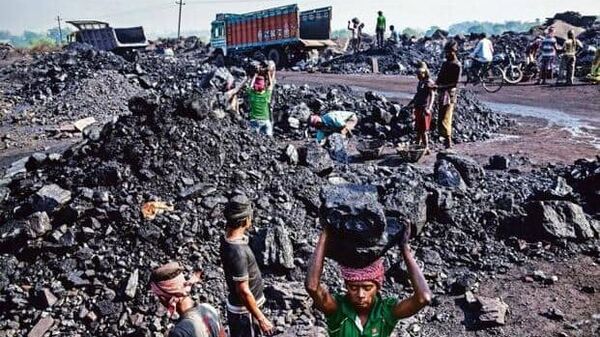Mint reported last week that ministerial consultations are underway to determine if the European Union’s carbon tax is WTO-complaint and if India should consider responding with retaliatory tariffs.
India needs a more constructive strategy to counter the European Union’s Carbon Border Adjustment Mechanism (C-BAM) than trying to impose retaliatory tariffs within the World Trade Organisation’s policy framework or outside it.
The WTO’s dispute settlement mechanism has been dysfunctional ever since former US president Donald Trump refused to cooperate on making appointments to its appellate bodies. India needs to institute a carbon-trading mechanism domestically, as China has, to let exports bear the price of their carbon content and avoid the need for European importers to add a carbon layer to the import price.
C-BAM is an attempt to level the playing field for European players in the so-called Emission Intensive and Trade Exposed (EITE) sectors. To begin with, five sectors are in the reckoning: electricity, cement, fertilisers, iron and steel and aluminium. When the EU commenced its carbon trading mechanism, EITE sectors were given free allowances, which they could trade in the carbon market. This was to prevent their flight to locations outside the EU, where they did not have to worry about carbon pricing.
Such flight would have resulted in no net reduction in carbon emissions globally, even as industry in the European Union relocated elsewhere, destroying jobs, incomes and taxes for its member states.
When the free allocations are phased out, to level the playing field for players that still face the pressure of carbon pricing, C-BAM has been proposed. Incidentally, a high-level committee that worked on finding solutions to loss of competitiveness as a result of introducing carbon pricing was co-chaired by Anand Mahindra, and border adjustment measures were one of the solutions identified by the committee.
Now, C-BAM is far from perfect, even from a European point of view, which seeks self-righteous satisfaction that it is doing what it can to fight climate change, whatever the rest of the world does. European produce that seeks an external market, while using a C-BAM sheltered product as an input, would face a competitive disadvantage vis-à-vis a producer from a country that does not have carbon pricing.
C-BAM levels the playing field within the EU – that is all. In order to compete with producers in the global market that are unburdened by carbon prices, European firms would be incentivised to set up shop in countries without carbon pricing. European banks would find it makes sense to lend to such companies or their competitors outside Europe. Selective measures such as C-BAM only serve to leak carbon from some markets to others, without reducing overall global emissions.
C-BAM is supposed to commence scrutiny of the carbon content of EITE imports from October, and get importers to buy carbon certificates equivalent to the European price of the imports’ carbon content from 2026. Countries such as India must use the intervening period to effect a paradigm shift in the global discourse on climate change and move from piecemeal, localised measures to holistic, coordinated, global solutions. In particular, the focus has to shift to sucking carbon dioxide out of the atmosphere to attain net-negative emissions rather than reductions in fresh emissions.
The carbon budget for containing warming below 1.5 degrees Celsius above pre-industrial levels was just 500 gigatonnes (Gt), according to the Sixth Assessment Report of the Intergovernmental Panel on Climate Change, with 2019 as the base year. A decade of growth would exhaust that budget, even with strenuous emission reductions. The only meaningful course of action is to suck CO2 out of the air in large quantities and use it as an input for economically viable processes, such as producing synthetic fuel for aircraft or making petrochemicals, graphene or carbon fibre.
At the same time, instituting national carbon trading regimes would incentivise the adoption of green technologies. A carbon tax could generate resources to offer tax credits to those who reduce their emissions while penalising offenders.
Climate change represents both a problem and an opportunity for a country like India. Policymakers must persuade Indian industry to tackle it in earnest and not to simply work around impediments such as green import tariffs in the EU, even if we recognise their flaws.
Download The Mint News App to get Daily Market Updates.
More
Less
#India #sound #strategy #counter #EUs #carbon #tax



